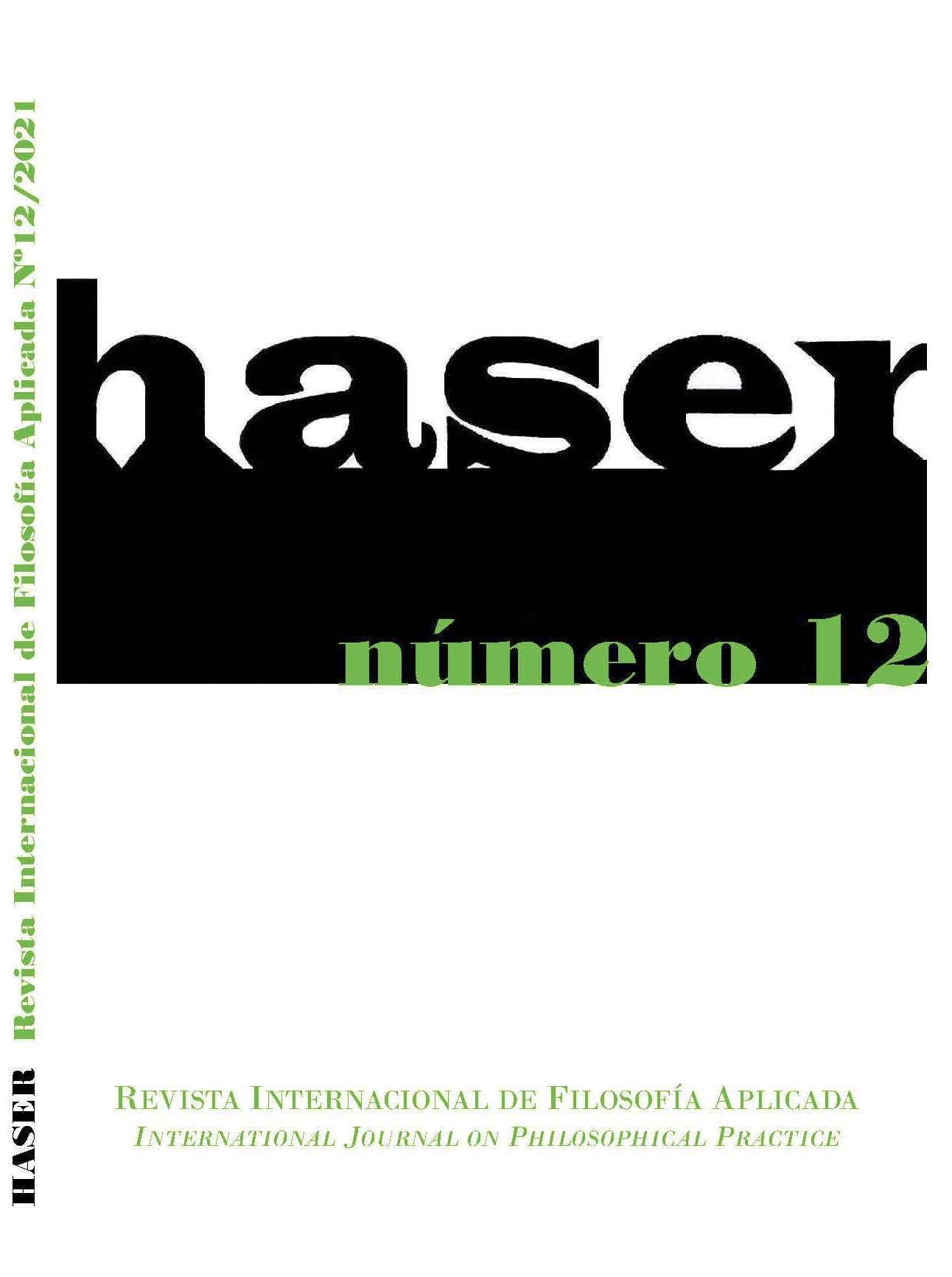PHILOSOPHICAL PRACTICE WITH CORPORAL ACTIONS
Abstract
In this article I will provide some elements and perspectives regarding how it's possible to carry out philosophical practices through corporal actions. To understand this and to be able to do it out first, we must understand some general assumptions and principles around a broad understanding of philosophy and philosophical practice. After laying these foundations, I will focus on three great ways of performing corporal actions as part of the work that is done in philosophical practice. The first has to do with the sensory uptake of the other. In this way we enormously enrich the flow of elements that we use for working with others and the development of working hypotheses. A second type of corporal actions that we can incorporate into philosophical practice has to do with the performance of bodily actions by the practical philosopher. In this case, we use our action, gestures and expressions as a way of promoting, deepening and intensifying philosophical processes that are developed through dialogue or in any way. Lastly, a third way of including corporal actions in intersubjective philosophical interactions has to do with requesting the performance of specific corporal actions from others or performing them in conjunction with them. The variety of possibilities and achievable routes in this case is immense, but here we have an indisputable potential for philosophical work with others, which is built in principle from the grasp of circumstance and the philosophical process that is developing. In each case I will be considering a broad vision of philosophical practice that includes the work of philosophical counseling, philosophy for/with children, philosophical workshops and applied philosophy in organizations.
Downloads
Downloads
Published
How to Cite
Issue
Section
License
Los autores/as que publiquen en esta revista aceptan las siguientes condiciones:
1. Los autores/as conservan los derechos de autor y ceden a la revista el derecho de la primera publicación, con el trabajo registrado con la licencia de atribución de Creative Commons, que permite a terceros utilizar lo publicado siempre que mencionen la autoría del trabajo y a la primera publicación en esta revista.
2. Los autores/as pueden realizar otros acuerdos contractuales independientes y adicionales para la distribución no exclusiva de la versión del artículo publicado en esta revista (p. ej., incluirlo en un repositorio institucional o publicarlo en un libro) siempre que indiquen claramente que el trabajo se publicó por primera vez en esta revista.
3. Se permite y recomienda a los autores/as a publicar su trabajo en Internet (por ejemplo en páginas institucionales o personales) antes y durante el proceso de revisión y publicación, ya que puede conducir a intercambios productivos y a una mayor y más rápida difusión del trabajo publicado (vea The Effect of Open Access).


